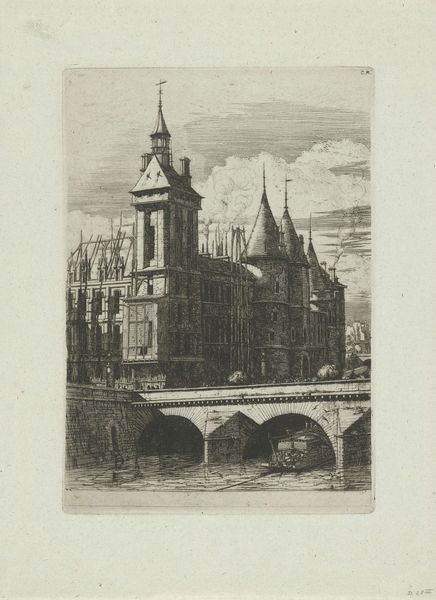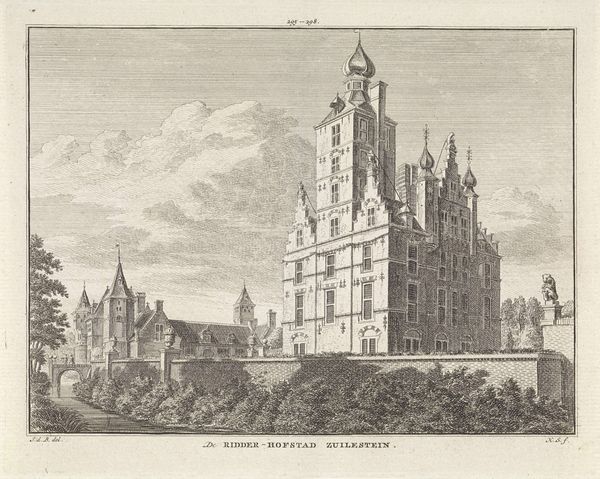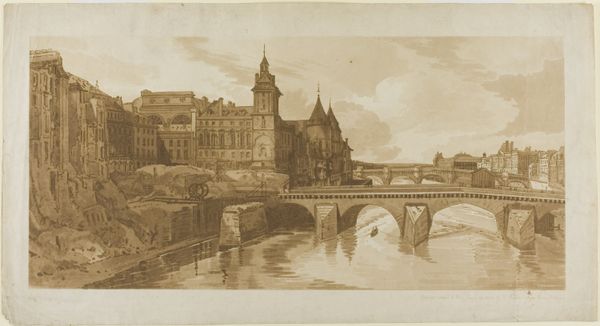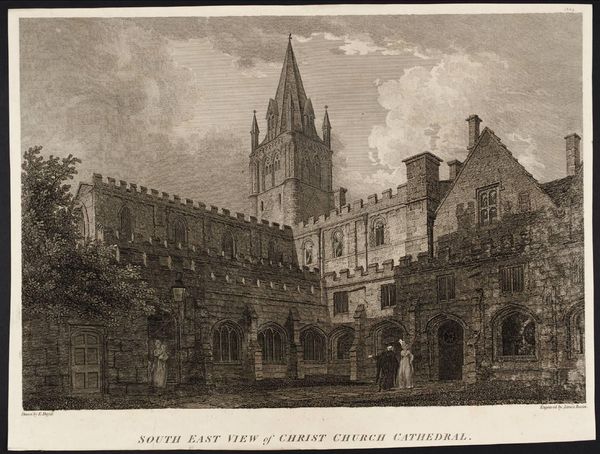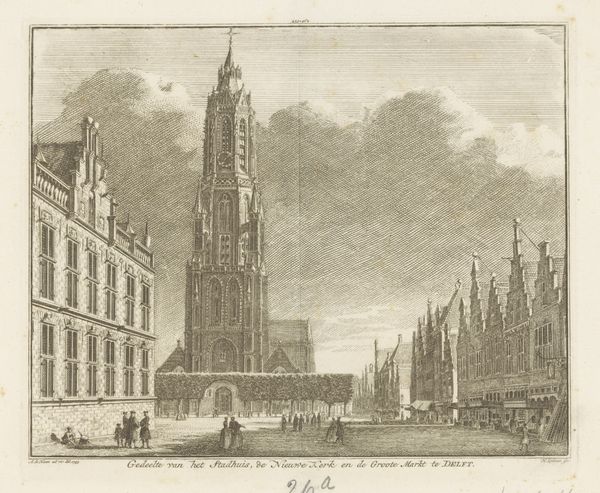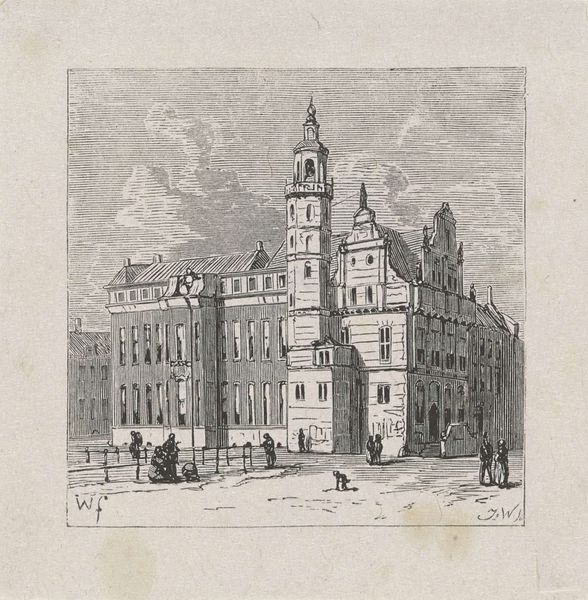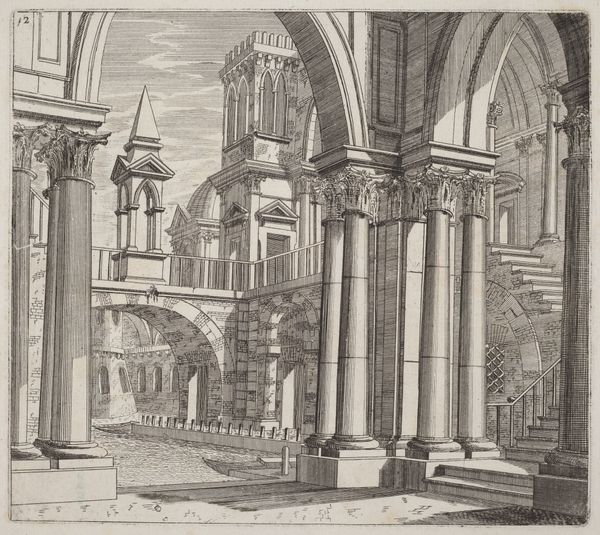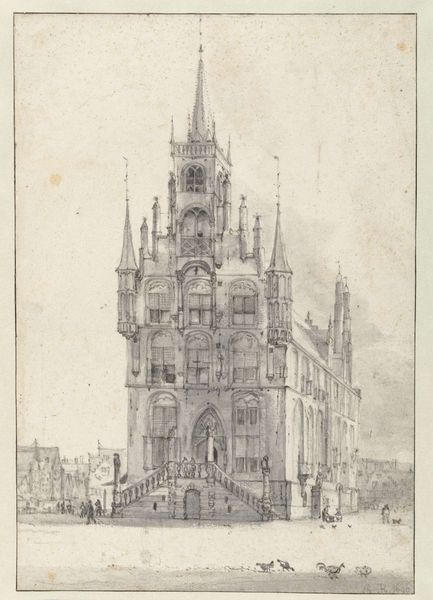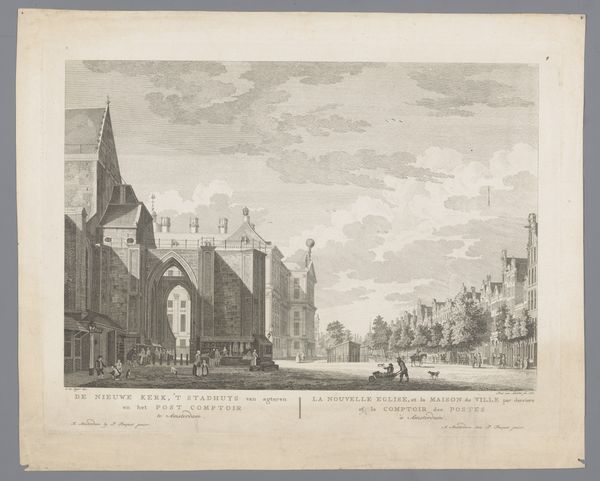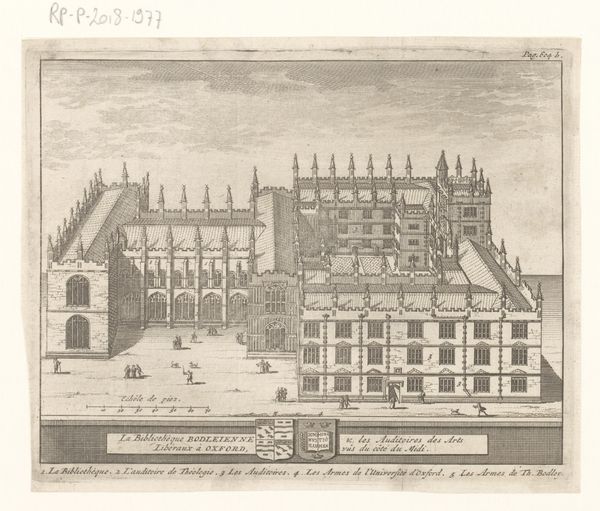
Copyright: National Gallery of Art: CC0 1.0
Editor: So, this is Charles Meryon's etching, *La Tour de l'Horloge, Paris* from 1852. The level of detail is just astonishing, like you could wander right into old Paris. There’s this… somber, almost haunting atmosphere. What strikes you about it? Curator: Haunting is the perfect word! I always feel Meryon captured a Paris on the cusp of disappearing. See how the light catches the Clock Tower? It's defiant, yet surrounded by scaffolding suggesting a city constantly under construction. It whispers of history and relentless change, almost like he felt he needed to create this artistic snapshot before time swept this Paris away forever. I feel the artist must have observed the cityscape daily for a long time to produce such rich detail using printmaking techniques. Do you feel a strong sense of light? Editor: Definitely, the highlights really pull you in. I'm curious about the Romanticism label. It's not exactly the sweeping landscapes I usually associate with that style. Curator: True! Think about Romanticism's obsession with the past, with emotions, and even the grotesque. Meryon transforms the city into a stage for these feelings. It is as if he took what was gothic in his time and imagined all it was, not what is seemed. Perhaps Meryon emphasizes the monumentality to celebrate the human accomplishment while questioning if change benefits civilization. Are those turbulent clouds I spy on the horizon or perhaps clouds from some fire down the river? The overall atmosphere of impending doom. Editor: That makes sense. I was so caught up in the detail, I missed the emotional weight. Thanks, I see so much more now. Curator: And I admire your eye for that exquisite detail. We've both unlocked another layer in this complex print, haven't we? It's like unlocking a time capsule from the banks of the river Seine.
Comments
No comments
Be the first to comment and join the conversation on the ultimate creative platform.
